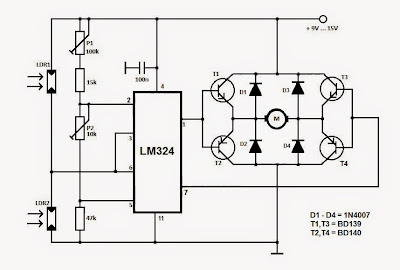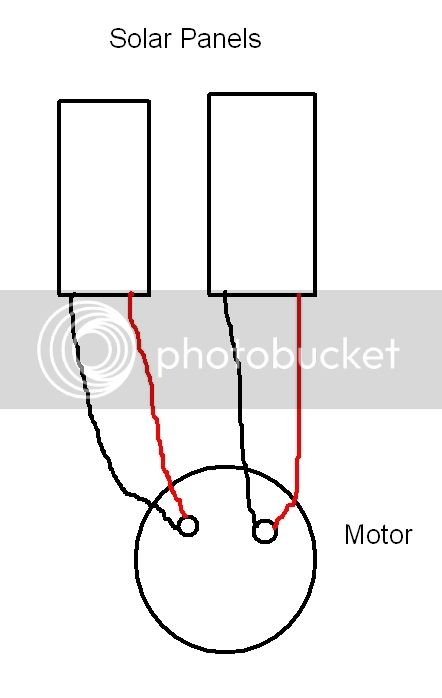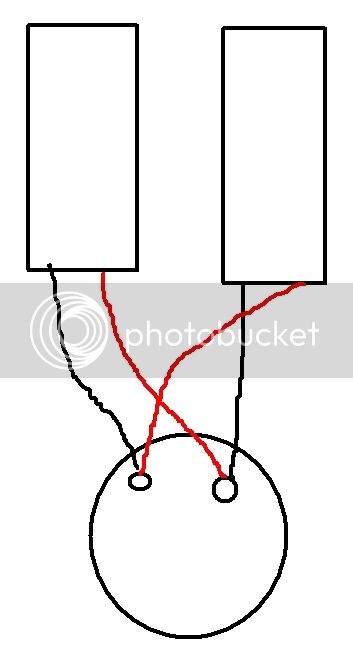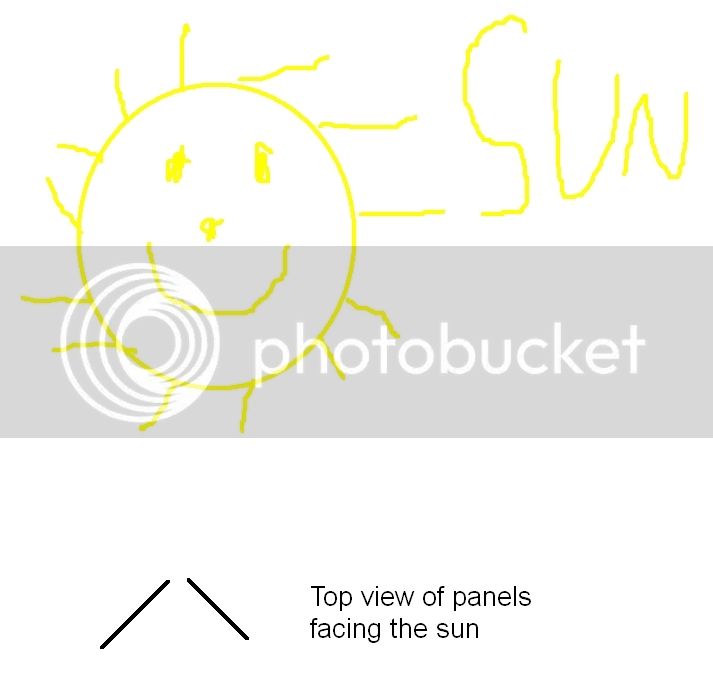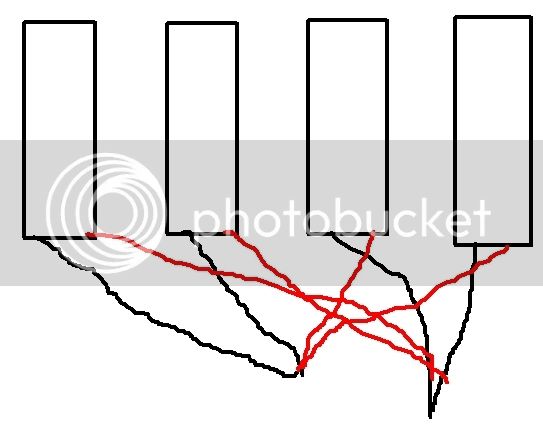Canine
Well-known member
Am playing with the idea of making a solar tracker. Not sure of the possible harm to the motor and/or panels.
Let's use two mini solar panels, 12v @ 80 ma. I place the panels at 45 degrees to each other. If the panels are receiving the same sun exposure, they will make the same amount of juice of course. If they are faced so one panel gets more sun than the other, then one panel will make more juice compared to the other.
When connecting those panels directly to a motor, my understanding is that the motor doesn't have a dedicated positive or negative terminal. You pick on and make that the negative, and the other one the positive. Then the motor will turn in one direction. Reverse the leads and the motor reverses.
Here is where it gets a little weird for me. I hook up both panels, taking a positive lead from one panel and a negative lead from the other panel then connecting those two opposite leads together on the same terminal on the motor. (I feel bad for connecting a positive lead from one solar panel directly to a negative lead from another solar panel in parallel.) Then I do the same for the other terminal on the 12v motor. Then if one panel has more sun, and is producing more juice, then the motor will turn in one direction. If the other panel gets more sun, then the motor turns the other way. When the panels get the same amount of sun, the motor stops. I'm pretty sure that is what will happen.
But am concerned about burning the motor up. 80 ma is a measly amount of amperage, but should I still be concerned about overheating the motor by having two 80 ma panels feeding into the motor at the same time all day long? How about two 160 ma panels?
Do I need to worry about hooking up a positive lead of a solar panel directly to the negative lead of another solar panel in parallel? Do I need a diode to protect them? The amperage is so small, it doesn't seem like it would hurt anything, but I don't know for sure.
When the panels are not directly facing the sun, which would be 99.9% of the time, the panel voltage will drop. Would 9 volts or less all day long on a 12 volt motor burn it up?
Let's use two mini solar panels, 12v @ 80 ma. I place the panels at 45 degrees to each other. If the panels are receiving the same sun exposure, they will make the same amount of juice of course. If they are faced so one panel gets more sun than the other, then one panel will make more juice compared to the other.
When connecting those panels directly to a motor, my understanding is that the motor doesn't have a dedicated positive or negative terminal. You pick on and make that the negative, and the other one the positive. Then the motor will turn in one direction. Reverse the leads and the motor reverses.
Here is where it gets a little weird for me. I hook up both panels, taking a positive lead from one panel and a negative lead from the other panel then connecting those two opposite leads together on the same terminal on the motor. (I feel bad for connecting a positive lead from one solar panel directly to a negative lead from another solar panel in parallel.) Then I do the same for the other terminal on the 12v motor. Then if one panel has more sun, and is producing more juice, then the motor will turn in one direction. If the other panel gets more sun, then the motor turns the other way. When the panels get the same amount of sun, the motor stops. I'm pretty sure that is what will happen.
But am concerned about burning the motor up. 80 ma is a measly amount of amperage, but should I still be concerned about overheating the motor by having two 80 ma panels feeding into the motor at the same time all day long? How about two 160 ma panels?
Do I need to worry about hooking up a positive lead of a solar panel directly to the negative lead of another solar panel in parallel? Do I need a diode to protect them? The amperage is so small, it doesn't seem like it would hurt anything, but I don't know for sure.
When the panels are not directly facing the sun, which would be 99.9% of the time, the panel voltage will drop. Would 9 volts or less all day long on a 12 volt motor burn it up?





